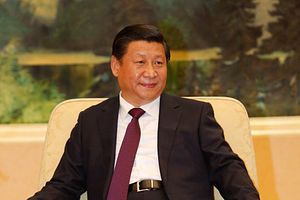China’s approach to resolving disputes has been guided predominantly by Confucian moderation and harmony, in which a middle path is sought and followed. In this Confucian way, unilateral and radical actions are to be shunned and rebuked. Since the early 1980s, China’s management of international affairs has also reflected Deng Xiaoping’s dictum for humbleness: “keeping a low profile and hiding brightness.” Combined, the two strategies have resulted in China’s approach to foreign relations being shaped by three guiding principles: respecting and accepting multiple perspectives when dealing with the international community; seeking mutual benefit in the negotiation processes; and aiming at building a harmonious world. These constructive principles are to be applied particularly in those cases where the disputes are complex and sensitive.
For example, during a meeting with Japanese leaders on May 31, 1979 to discuss the Sino-Japanese disputes over the Diaoyu/Senkaku Islands in the East China Sea, Deng recommended that China and Japan should “set aside disputes and pursue joint development,” and leave territorial disputes to future generations who will be better equipped to handle the issue. Arguably, this moderate approach underlined China’s successful international relations for 30 years after its opening up, including its relations with the United States and Russia, its management of border disputes with India and Bhutan, and its implementation of the “one country, two systems” approach to reintegrate Hong Kong and Macau into the motherland.
Until recently, Beijing followed this moderate middle path in its territorial disputes in the South China Sea (SCS) by implementing the “Declaration on the Code of Conduct on the South China Sea.” Approved by China and ASEAN members in 2002, it is aimed at finding mutually beneficial individual agreements with the different countries involved in the conflict and jointly developing the sea’s natural resources.
In the last five years, however, China has abandoned this approach and has adopted an assertive, often belligerent stance, in pursuit of its extensive territorial claims in the SCS. President Xi Jinping’s “Chinese Dream” campaign, which is aimed at reviving China’s past glories and world status, has made Beijing’s stance more antagonistic and aggressive. Beijing’s assertive discourse aims at legitimizing and rendering indisputable China’s territorial sovereignty ambitions and silencing arguments and claims put forward by the neighboring states involved. Consequently, the territorial disputes that primarily pit China against the rest of the claimants have grown in intensity and threatened to escalate into military confrontation.
This new approach to international affairs flatly rejects Confucian moderation and Deng’s more humble approach in the international arena. A review of the current discourse and declarations made by the claimants underscores the fact that their claims are incompatible. Evidence of this are the statements made by the Chinese and Filipino Foreign Ministries, with the former arguing for China’s indisputable sovereignty over the islands and adjacent waters, and the latter rejecting China’s claims to the SCS encompassed by the “nine-dash line” as contrary to convention and exceeding China’s maritime entitlements under UNCLOS.
In the wake of the Permanent Court of Arbitration’s ruling on July 12, 2016, overwhelmingly supporting the Philippines’ interpretation of UNCLOS, China has not only emphatically declined to abide by the ruling, but has also become more assertive and aggressive in its claims and actions. President Xi and Premier Li Keqiang insist that they want to maintain friendly relations with their neighbors and peacefully resolve disputes, but Beijing’s messaging and actions on the ground stand in contrast. A bellicose rhetoric and the building of militarized islands in the SCS indicate that China is prepared for potential escalation in regional tensions and even military engagement.
Why has China undertaken such a radical departure in its foreign policy approach as regards the SCS? One possible theory is that the Communist Party of China (CPC) wants an external conflict to divert attention of the Chinese people from numerous domestic tensions. The CPC is aware that most Chinese, including those who are unhappy with its leadership domestically, will rally behind them if China enters into a military confrontation over territorial claims. This is evidenced, in part, by the large majority of Chinese who are convinced that the SCS is indisputably part of China.
Another hypothesis, albeit difficult to document, is that Xi needs to escalate tensions in the SCS to help him in his unprecedented fight to uproot decades-long corruption among CPC members and, in particular, China’s military leadership. Xi is in the process of reshuffling the military leadership and fundamentally restructuring the military, resulting in some commanders offering resistance, fearful of a loss in lucrative privileges. Growing disputes in the SCS have given Xi a robust argument for the need to restructure the military.
A third hypothesis for Beijing abandoning the Confucian middle path and adopting an aggressive stance in the SCS is that the CPC is testing how much the U.S. is willing to yield to China’s expanding sphere of influence. The results of this ‘experiment’ will then allow China to deal more effectively with its other major conflict, the one over the Diaoyu/Senkaku Islands with Japan. This is particularly relevant for Beijing due to the additional strategic and military challenge that the U.S. pivot to the Asia-Pacific represents for China’s desire to establish itself as the dominant regional power.
If the Communist Party of China is genuinely interested in a peaceful resolution of the disputes in the SCS, it should return to the moderate Confucian middle way by respecting and integrating the arguments and claims of all parties involved in the conflict, and seeking mutual benefit in the negotiation processes. This approach will provide an environment in which the SCS territorial disputes can be resolved and, ultimately, contribute to China’s ambition to build a harmonious world.
Patrik K. Meyer is currently a visiting Professor at Visiting Professor in International Relations at Muhammadiyah University, Yogyakarta, Indonesia.
This post has previously been published on the EastWest Policy Innovation Blog.

































